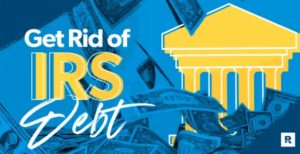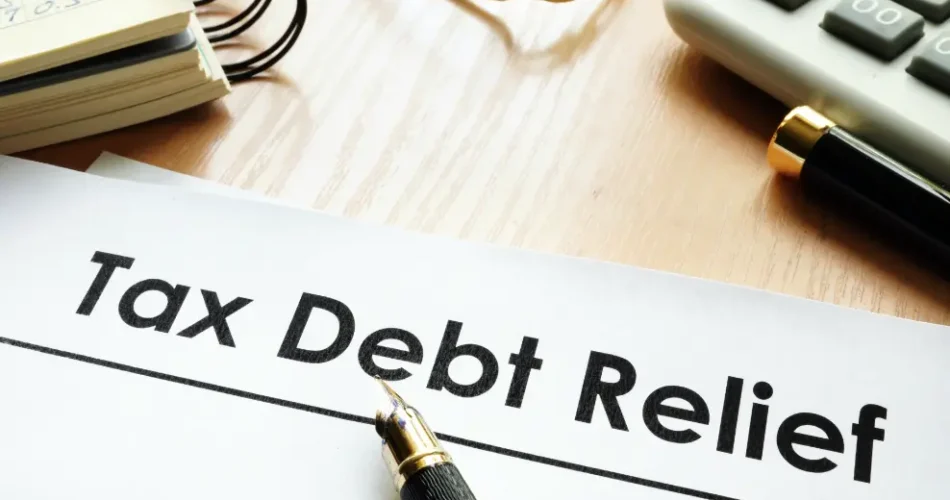Dealing with debt is already stressful, but when you add tax debt into the mix, things can become overwhelming. Whether it’s unpaid income taxes, IRS penalties, or interest piling up, finding a way to breathe financially is crucial. That’s where debt tax relief comes into play.
This guide will walk you through everything you need to know about debt tax relief—what it is, how it works, who qualifies, and how to get started. We’ll keep it simple, easy to follow, and packed with tips to help you make informed decisions.
Contents
- 1 Table of Contents
- 2 1. What Is Debt Tax Relief?
- 3 2. Common Types of Tax Debt
- 4 3. Why Tax Debt Happens
- 5 4. How Debt Tax Relief Works
- 6 5. Types of Debt Tax Relief Programs
- 7 6. IRS Debt Tax Relief Options
- 8 7. State Tax Debt Relief
- 9 8. Private Debt Relief Services
- 10 9. Eligibility for Debt Tax Relief
- 11 10. Steps to Apply for Tax Relief
- 12 11. Benefits of Tax Relief
- 13 12. Risks and Red Flags
- 14 13. When to Hire a Tax Professional
- 15 14. FAQs About Debt Tax Relief
- 16 15. Final Thoughts
Table of Contents
- What Is Debt Tax Relief?
- Common Types of Tax Debt
- Why Tax Debt Happens
- How Debt Tax Relief Works
- Types of Debt Tax Relief Programs
- IRS Debt Tax Relief Options
- State Tax Debt Relief
- Private Debt Relief Services
- Eligibility for Debt Tax Relief
- Steps to Apply for Tax Relief
- Benefits of Tax Relief
- Risks and Red Flags
- When to Hire a Tax Professional
- FAQs About Debt Tax Relief
- Final Thoughts
1. What Is Debt Tax Relief?
Debt tax relief refers to various strategies and programs designed to help individuals or businesses reduce or eliminate their tax-related debts. This relief can come from the IRS, state tax authorities, or private companies that specialize in negotiating tax debt.
In simple terms, debt tax relief helps you:
- Settle your tax debt for less than you owe
- Set up a payment plan
- Delay collection efforts
- Reduce penalties and interest
2. Common Types of Tax Debt
Tax debt can come from various sources, including:
- Unpaid Income Taxes
- Payroll Taxes (for businesses)
- Self-Employment Taxes
- Property Taxes
- Interest and Penalties
Each type of tax debt has its own rules, but debt tax relief can help address most of them.
3. Why Tax Debt Happens

Tax debt can happen to anyone. Common causes include:
- Not withholding enough from your paycheck
- Failing to file returns on time
- Job loss or reduced income
- Unexpected medical expenses
- Self-employment underestimations
- Honest mistakes or IRS errors
No matter the reason, debt tax relief may offer a solution.
4. How Debt Tax Relief Works
The goal of debt tax relief is to work with the IRS or your state to find a manageable way to repay or reduce your debt. Relief may include:
- Filing for an Offer in Compromise (OIC)
- Requesting Installment Agreements
- Seeking Penalty Abatement
- Applying for Currently Not Collectible status
- Using the Innocent Spouse Relief provision
The right path depends on your financial situation and the amount owed.
5. Types of Debt Tax Relief Programs
Here are the most common debt tax relief options:
a. Offer in Compromise (OIC)
This allows you to settle your tax debt for less than the full amount. The IRS will consider your ability to pay, income, expenses, and assets.
b. Installment Agreement
You agree to pay your tax debt over time in monthly installments. This can make your debt more manageable.
c. Penalty Abatement
The IRS may forgive certain penalties if you have a valid reason, such as illness or natural disasters.
d. Currently Not Collectible Status
If you’re in financial hardship, the IRS may temporarily pause collection actions.
e. Innocent Spouse Relief
If your spouse or ex-spouse made errors on your joint tax return, you may be relieved of responsibility.
6. IRS Debt Tax Relief Options
The IRS offers several programs for taxpayers:
- Fresh Start Initiative: Helps individuals and businesses settle tax debts more easily.
- Taxpayer Advocate Service (TAS): An independent organization that helps resolve issues with the IRS.
Each program has eligibility criteria, and not all taxpayers will qualify. Always read the fine print.
7. State Tax Debt Relief
Many states have their own debt tax relief programs. These may include installment plans, penalty waivers, and state-specific OICs.
Examples:
- California’s Offer in Compromise Program
- New York’s Voluntary Disclosure Program
- Texas’ Installment Payment Plans
Contact your state’s Department of Revenue for details.
8. Private Debt Relief Services
There are companies that offer to negotiate with the IRS or state tax authorities on your behalf. While some are legitimate, others are not.
Warning: Be careful. Only work with certified professionals and always check reviews and credentials.
9. Eligibility for Debt Tax Relief
To qualify for debt tax relief, you usually need to:
- Owe a certain amount of money
- Be current on tax filings
- Prove financial hardship
- Have limited income or assets
Each program has its own qualifications. The IRS or your tax advisor can guide you.
10. Steps to Apply for Tax Relief
- File all your tax returns: The IRS won’t work with you unless you’re compliant.
- Assess your financial situation: Know your income, expenses, debts, and assets.
- Choose a program: Pick the relief option that fits your case.
- Submit the paperwork: Include all forms and supporting documents.
- Wait for approval: This can take weeks to months.
- Follow the terms: If approved, stick to the agreement.
11. Benefits of Tax Relief
- Lower payments
- Debt reduction
- Avoid legal action
- Stop wage garnishment
- Less stress and anxiety
For many people, debt tax relief is a path back to financial stability.
12. Risks and Red Flags
While debt tax reliefs can help, there are some risks:
- Not all requests are approved
- You may still owe interest
- Scammers target people with tax debt
Avoid any service that promises to eliminate 100% of your debt.
13. When to Hire a Tax Professional
Consider hiring a tax expert if:
- You owe more than $10,000
- You’re being audited
- You don’t understand IRS forms
- You need help negotiating
Tax professionals can make the debt tax relief process easier and faster.
14. FAQs About Debt Tax Relief
Q: Can debt tax relief reduce my entire tax bill? A: It can reduce it, but not eliminate it completely in most cases.
Q: How long does the process take? A: It depends on the program—some take weeks, others several months.
Q: Will it affect my credit score? A: Indirectly, yes—especially if there are liens involved.
Q: Can I apply on my own? A: Yes, but professional help can increase your chances of success.
15. Final Thoughts
If you’re buried in tax debt, know that help is available. Tax relief programs can ease your financial burden, give you time to catch up, and even reduce what you owe.
The key is to act early, understand your options, and work with professionals when necessary. The IRS and state agencies are often more willing to work with people who show effort and honesty.
